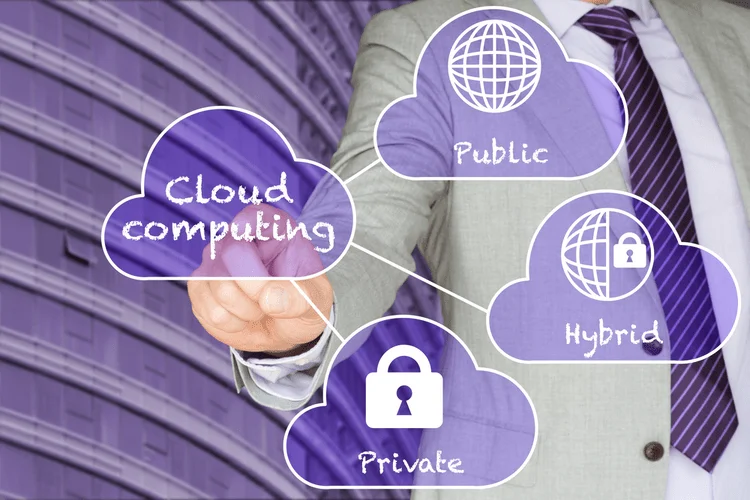Using APIs as foundational constructing blocks, we help your functions communicate with each other and go away no room for disconnects. Companies use API management to democratize safe access to data and companies. Businesses can share digital property What is Enterprise Application Integration and processes, and developer communities can access assets with ease via new channels, gadgets, and consumer interfaces.
- A script could be used to extract information from one software, modify its structure or format, and send it to a special application.
- Understanding EAI’s fundamentals equips organizations to harness its potential, driving innovation and sustaining a aggressive edge in the dynamic international market.
- Enterprise software integration (EAI) refers back to the strategy of integrating various software functions, methods, and databases inside a company to enable real-time data sharing and streamline enterprise processes.
The Whole Guide On Erp System Integration
They may also be deployed on personal cloud servers, hosted either on-premises or managed off-site by a third-party service supplier. Some enterprise organizations have migrated their purposes to public cloud environments. Others have built and customized a hybrid cloud structure where some applications are hosted on non-public cloud servers, some on public cloud servers, and there’s some interface that connects them. Talend has every little thing you have to hit the bottom working whenit comes to software integration.
Worth Of Enterprise Utility Integration

In this article, we’ll explore its core mechanisms, models, and what a successful EAI project and how to measure them. Understanding EAI’s fundamentals equips organizations to harness its potential, driving innovation and sustaining a aggressive edge in the dynamic international market. EAI, or Enterprise Application Integration, is a framework for connecting totally different enterprise applications to allow data sharing and course of automation. In simple phrases, EAI makes positive all of the different elements of an organization’s tech can work together properly.
Want A Professional Group Of Developers?

Often, that is as a end result of adoption of different cloud and on-premise options over time. Enterprise integration consolidates these unconnected elements, with all purposes utilizing a standard information mannequin to work together in real time. This mannequin approaches integration holistically and can serve businesses of all sizes. True enterprise integration extends far beyond methods, applications, and processes to embody organizational cultures, constructions, and workflows. Converging the range of expertise, knowledge, and expertise will break down silos and yield new digital offerings in addition to an enhanced customer expertise, general. Endress + Hauser is an industrial machinery and components (IM&C) firm based in Germany.
Key Machine Learning Studio Use Cases Reworking Manufacturing

Microservices are important for designing cloud-native options that maximize the benefits of shifting enterprise methods to the cloud. However, they require further instruments and expertise to implement—capabilities that each one organizations might not have. A vendor may supply a variation on a specific design or go for a hybrid approach that mixes different designs. A hybrid platform may be particularly useful when working with both on-premises and cloud-based methods. For example, an EAI platform may use ESB technologies for legacy on-premises applications and integration platform as a service (iPaaS) for the cloud sources.
It offers support by way of reside chat, automation strategy calls, and self-guided content material like videos and pre-made workflows, empowering companies to confidently streamline their processes. TIBCO Cloud Integration, a part of Cloud Software Group, is an iPaaS that accelerates utility and knowledge integration throughout hybrid environments. It relies on the open-source Project Flogo and supports both API-led and traditional integration methodologies, which reduces prices and accelerates time-to-market. The platform’s graphical interface, powered by TIBCO Scribe, and pre-built connectors make it easy to combine cloud and on-premise functions.
Different departments in a large enterprise use totally different functions for duties like payroll management, enterprise resource planning, and customer relationship administration. It may end up in information silos as completely different applications seize completely different data features of the same entity. Enterprise application integration supports data synchronization so organizations can automate enterprise processes and improve productivity. Data flows freely between purposes with out making important database or software code changes. Informatica specializes in cloud knowledge management and integration, offering the AI-powered Informatica Intelligent Data Management Cloud (IDMC).
Each microservice has its own database and state so it can be developed, deployed, scaled, and maintained independently. Microservices additionally talk immediately with others utilizing APIs and commonplace protocols, eliminating the necessity for service bus integration. Microservices is another flexible architecture that extends SOA by lowering service dependencies even further.
This consolidated knowledge allows a more accurate analysis of enterprise efficiency, developments, and alternatives. In dynamic business environments, having probably the most up-to-date data permits leaders to reply swiftly to market modifications, buyer demands, and operational challenges. This agility is important for sustaining a aggressive edge and driving enterprise development.
This lowers the reliance on specialized developers and maximizes business value by allowing customers of all technical ranges to contribute. An EAI platform is versatile enough to integrate various on-premise and cloud-based services. The platform’s adaptability makes it simple to add, remove, or replace applications or services without disrupting operations or requiring a significant redesign of the techniques in place. Using APIs to build an ecosystem of consumers, companions, and suppliers, they will facilitate seamless information trade, create distinctive services and enterprise models, and drive aggressive differentiation. EAI plays a vital role in enhancing decision-making capabilities by offering a comprehensive and holistic view of business operations. When data from varied systems is built-in, it creates a single supply of reality that decision-makers can depend on.
Organizations employ numerous enterprise functions to facilitate seamless communications and collaboration between completely different departments to improve efficient business operations. Every enterprise depends on an excellent number of these functions to smoothen enterprise processes. Enterprise application integration is essential for businesses in search of to spice up effectivity and competitiveness in 2024. It permits seamless integration, innovation, and progress, remaining key to digital transformation and success in the evolving world market.

This perhaps explains why greater than 60% of enterprise professionals are frustrated by their inability to deliver for lines of enterprise rapidly. With hub and spoke, you can use a centralized repository to integrate your applications, reformat your knowledge, and determine the place it goes. This system can move information between functions quicker than point-to-point, however it nonetheless requires assist out of your developers—as they’re the ones who in the end have to move the data by using runtime parts. Also, based mostly on the information that’s added from your advertising automation software to your CRM, your reps may have the ability to personalize their outreach, which only improves their probabilities of connecting with and changing prospects. We draw on enterprise utility integration best practices to improve the efficiency of your built-in techniques and improve system interoperability.
An integration middle of excellence (ICoE), or integration competency center (ICC), capabilities as a centralized unit that systematically integrates knowledge, systems, cloud platforms, and purposes. This strategy is scalable, cost-effective, and provides an enduring competitive edge. Enterprise application integration (EAI) is essential as a result of most organizations depend on a variety of applications and services for his or her every day operations.
Therefore, in an infrastructure with a large number of components, the system is sort of unmanageable. To share info, a script would extract and modify knowledge from one application and ship it to a different, thus facilitating the interconnection and smooth circulate of information and information between various applications. Since the appearance of EAI for harmonizing software program and purposes infrastructure, the finest way businesses function has modified tremendously, and corporations have seen incredibly exponential development. But as a corporation grows and expands, the number of enterprise purposes required to maintain an honest degree of operations efficiency and productivity increases exponentially.
Transform Your Business With AI Software Development Solutions https://www.globalcloudteam.com/